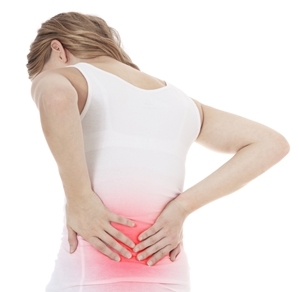Back pain is probably going to be one of the biggest ailments you treat while on physical therapy jobs. However, the root cause behind your patient's back pain can be any one of a variety of factors, so it's important to understand what these are during your physical therapy assignments.
Back pain could be a symptom of a larger medical issue, or it could be just a mild discomfort for your patients. In any case, communicating with your patients and truly listening to their concerns is of the utmost importance.
Factors behind back pain
According to the Mayo Clinic, back pain is the No. 1 cause of disability across the globe. Chances are during your physical therapy jobs, you're going to encounter patients with back pain – maybe during several points in your day.
Many people already know that back pain can affect a lot of older people due to age-related conditions, but chronic back pain is on the rise for millennials as well. Several studies have shown that sedentary lifestyles and laptop technology-based jobs are fast-tracking back pain in younger generations. So, it's likely that you'll treat people from all walks of life with this ailment.
Patients can often be very concerned with back pain when it strikes, mostly because the symptoms can be very severe at the onset and come on suddenly. During these times, it's imperative to understand what the source of the pain is so that you can better reach a conclusion with other medical personnel about treatment.
Luckily, back pain is easily treatable and preventable, and surgery is rarely necessary. Here are some of the most common causes of back pain:
1. Pregnancy: The body goes through a lot changes during pregnancy, including weight shifts that might result in back pain.
2. Poor posture: Neutral pelvic positions and correct posture across your spine are crucial for optimal back health. Unfortunately, many people have jobs that require them to sit at desks for hours at a time, which can result in poor posture. Encourage your patients to choose chairs that don't allow them to slouch or hunch forward. Also inform your patients that taking breaks more often to walk around can further promote a more neutral pelvic position.
3. Stress and anxiety: The Mayo Clinic states that people who suffer from depression and anxiety have a greater risk of back pain. If patients have a particularly stressful job or suffer from psychological conditions, they might be manifesting the symptoms in back pain.
4. Obesity: Being overweight can put a lot of added pressure and strain on the joints, especially those in your lower back. Obesity is a chronic epidemic that impacts the health of your patients in general, so it's crucial that you encourage a healthy lifestyle. Exercise is one of the easiest ways to combat back pain, as it helps to loosen up stiff joints and inflammation.
5. Smoking: Cigarettes are a poor decision for lung health, but few medical professionals know that smoking also halts nutrients from being delivered to the disks in your back.
6. Age: As we mentioned before, sometimes back pain is simply a part of growing older. In fact, many people will begin to experience back pain symptoms once they reach their 30s or 40s.
7. Arthritis: The knees, hands, ankles and hips are all impacted by arthritis, as is the lower back region. In fact, according to Medical News Today, arthritis in the lower back can develop into spinal stenosis, which is when the spinal cord narrows due to inflamed joints.
8. Ruptured or bulging disks: If an individual plays sports or encounters an accident, he or she might endure a bulging or ruptured disk, which can be very painful, as it puts pressure on nerves.
9. Genetics: Sometimes if people are born with an abnormal curve in their spine, they might endure more back pain. One of the more common conditions associated with this phenomenon is scoliosis.
10. Poor lifting techniques: Many of your patients might ensure a pulled muscle or strain in their backs after exhibiting poor lifting techniques, especially when moving furniture or other heavy objects. Be sure to inform your patients to lift while using their knees so that weight is distributed evenly and there is no twisting involved.
Listen to your patients to make sure that their back pain isn't the sign of something more serious. For example, if the pain is shooting down to their buttocks or legs, or if the pain starts tingling or burning (rather than the typical dull ache), or if muscles become numb or weakened, it could be a symptom of a condition (such as sciatica) that needs to be further investigated by a doctor.


Physical therapist are actually a great and a huge help to the community. They are a huge help for you to deal with your back pains. Thanks for nothing this great article.